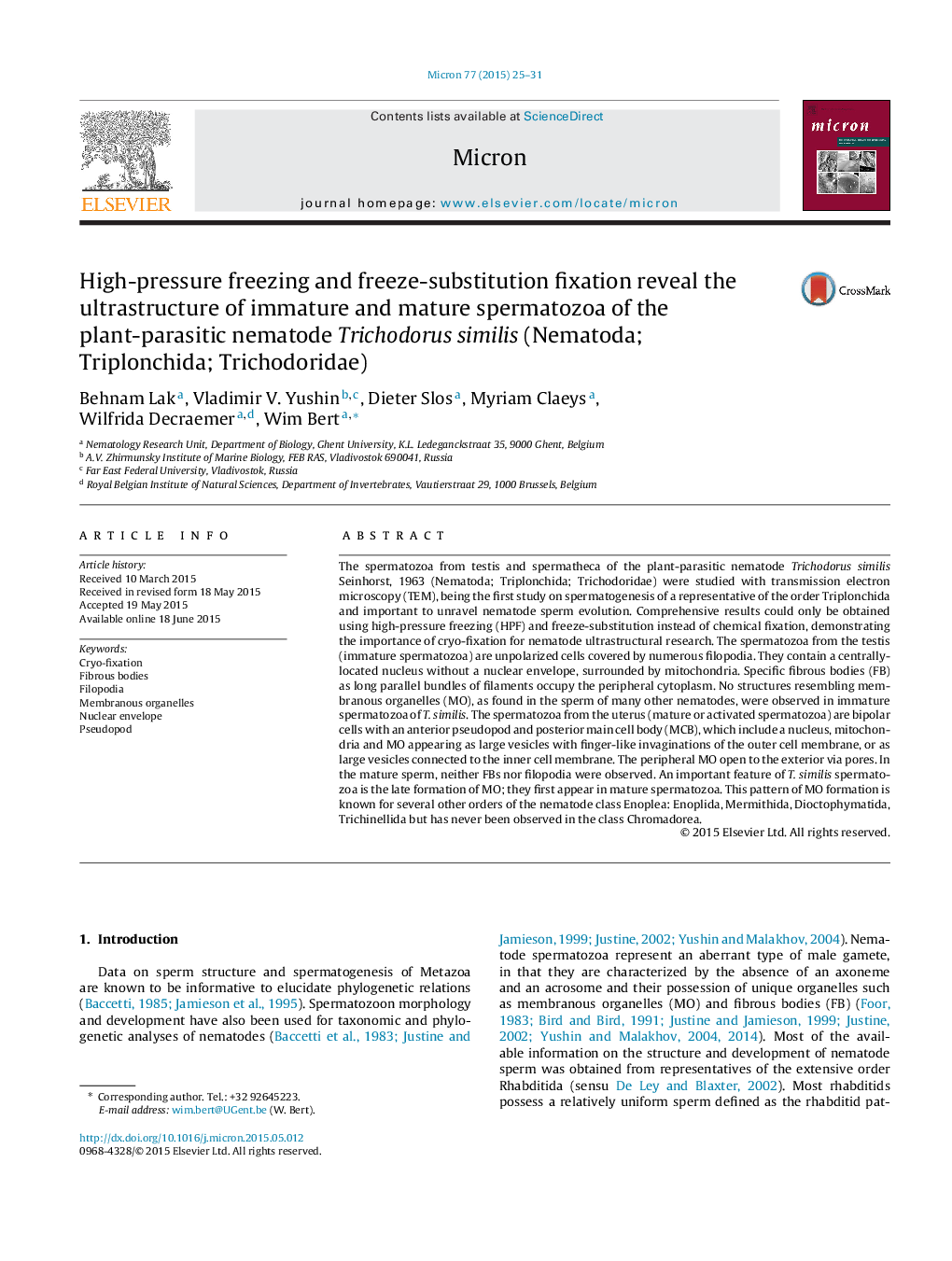| کد مقاله | کد نشریه | سال انتشار | مقاله انگلیسی | نسخه تمام متن |
|---|---|---|---|---|
| 1588792 | 1515139 | 2015 | 7 صفحه PDF | دانلود رایگان |

• High-pressure freezing and freeze-substitution instead of chemical fixation enables the first ultrastructural study of spermatogenesis in Triplonchida (Nematoda).
• Our results confirm that cryo-fixation is a promising method to freeze biological samples of 0.2–6 mm, such as nematodes.
• The absence of a nuclear envelope in the mature and immature spermatozoon of T. similis is a major difference between the subclass Enoplia, i.e., between the order Triplonchida and the order Enoplida.
• Asynchronous formation of MO and FB and late formation of MO in the class Enoplea, including Triplonchida and T. similis, suggest a different type of aberrant organelles formation in Enoplea and a distinct difference between the two nematode classes, Enoplea and Chromadorea.
The spermatozoa from testis and spermatheca of the plant-parasitic nematode Trichodorus similis Seinhorst, 1963 (Nematoda; Triplonchida; Trichodoridae) were studied with transmission electron microscopy (TEM), being the first study on spermatogenesis of a representative of the order Triplonchida and important to unravel nematode sperm evolution. Comprehensive results could only be obtained using high-pressure freezing (HPF) and freeze-substitution instead of chemical fixation, demonstrating the importance of cryo-fixation for nematode ultrastructural research. The spermatozoa from the testis (immature spermatozoa) are unpolarized cells covered by numerous filopodia. They contain a centrally-located nucleus without a nuclear envelope, surrounded by mitochondria. Specific fibrous bodies (FB) as long parallel bundles of filaments occupy the peripheral cytoplasm. No structures resembling membranous organelles (MO), as found in the sperm of many other nematodes, were observed in immature spermatozoa of T. similis. The spermatozoa from the uterus (mature or activated spermatozoa) are bipolar cells with an anterior pseudopod and posterior main cell body (MCB), which include a nucleus, mitochondria and MO appearing as large vesicles with finger-like invaginations of the outer cell membrane, or as large vesicles connected to the inner cell membrane. The peripheral MO open to the exterior via pores. In the mature sperm, neither FBs nor filopodia were observed. An important feature of T. similis spermatozoa is the late formation of MO; they first appear in mature spermatozoa. This pattern of MO formation is known for several other orders of the nematode class Enoplea: Enoplida, Mermithida, Dioctophymatida, Trichinellida but has never been observed in the class Chromadorea.
Journal: Micron - Volume 77, October 2015, Pages 25–31